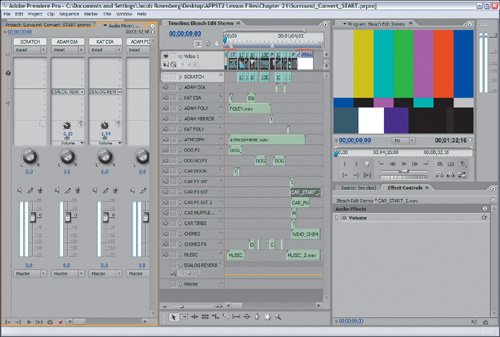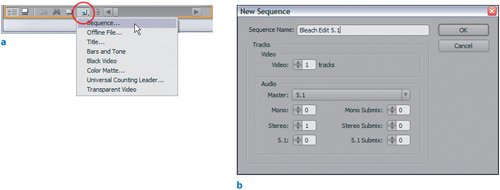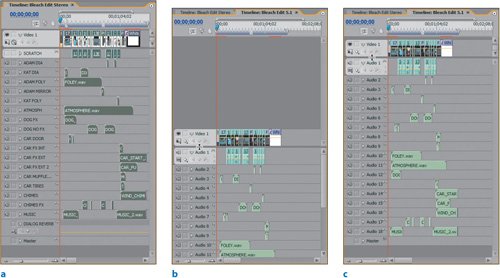Converting a Stereo Mix to 5.1 Surround
| In the previous chapter's two-channel stereo project, you learned about mixing and automation to spatially distribute the sound so it came from either the left or right speaker. Two-channel stereo audio is fundamentally based on a left and right speaker, while 5.1 surround sound, also referred to as six-channel audio, is based on distributing sound to six speakers. Three speakers face the person listening: left, center, and right. Two are typically behind the listener: surround left and surround right. The sixth, LFE, is a low-frequency speaker that completes the surround environment by providing the deep bass. The LFE is typically in the front center on the floor. Converting a stereo project to 5.1 is as easy as copying and pasting. To start this lesson, open the Project Surround_Convert_START.prproj from the APPST2 Lesson Files/Chapter 21 folder (Figure 21.1). To provide a project with the depth to properly articulate 5.1 mixing, this project file has 18 audio tracks all filled with sound elements from the final scene of my short film Bleach. You'll find the files for this project in the Chapter 21 and Chapter 26 folders. Figure 21.1. Take a close look at the Surround_Convert _START project and its workspace. Notice how the Project panel and Audio Mixer panel are docked into the same frame, which is tall enough to accommodate the expanded mixer. Also notice how the timeline with all of its audio tracks is tall enough to display them. Because the Program Monitor and Effect Controls panel are less important, they have been reduced in overall size Notes For more on configuring a surround sound speaker system, see Chapter 17, "Using Your Audio Hardware."
Congratulations. You just converted a stereo sequence into a 5.1 sequence. Simple, eh? Of course, if you want to exactly duplicate the source sequence, you still have to manually rename each of the tracks in the 5.1 project. Notice that when you copied and pasted, the Paste command added the tracks in groups. If the 5.1 sequence had 18 created tracks, each matching the stereo sequence's stack order, then the copied and pasted sequence will match the original. I have gone ahead and renamed the tracks so you can start remixing in the next lesson. |
EAN: 2147483647
Pages: 200
- Enterprise Application Integration: New Solutions for a Solved Problem or a Challenging Research Field?
- The Effects of an Enterprise Resource Planning System (ERP) Implementation on Job Characteristics – A Study using the Hackman and Oldham Job Characteristics Model
- Distributed Data Warehouse for Geo-spatial Services
- A Hybrid Clustering Technique to Improve Patient Data Quality
- Development of Interactive Web Sites to Enhance Police/Community Relations


